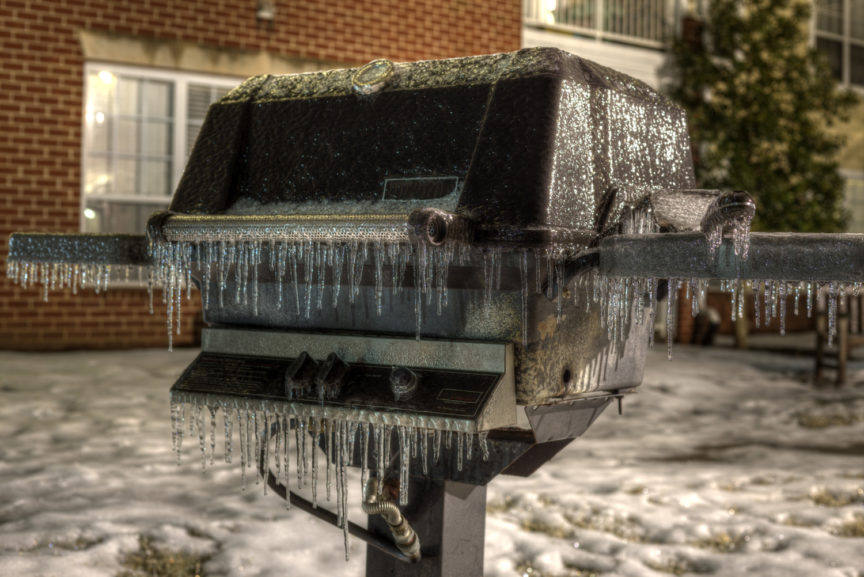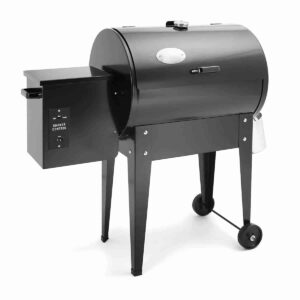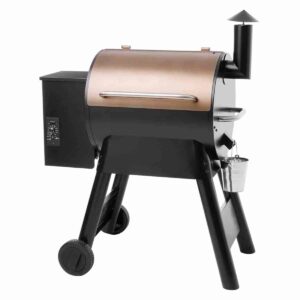Gas grills are the modern way to grill outside. Gone are the days of grappling with giant bags of dirty charcoal, trying to find a lighter, and drowning coals in lighter fluid before almost burning your hair off. As with all things, there are some common issues you may encounter when using your grill. This article will cover the common issues and fixes for those issues.
What are some simple fixes for the most common gas grill issues? Some issues can be easily fixed as long as you have the knowledge to identify them. Safety first! Always disconnect your fuel tank and valve before attempting any repairs! After disconnecting your tank, set it aside from the area you’re working in.
After you have your tank disconnected and set aside from the work area, you’re ready to follow this guide on simple fixes for the most common gas grill issues. Here are some of the usual problems you may encounter, and the very simple fixes that accompany them.
If you are having trouble with a repair or you are not sure how to proceed in fixing your grill, you will find all of the answers that you need in this helpful guide. Keep reading to learn about all of the staple gas grill problems and how you can fix them when they occur.
The Most Common Gas Grill Issues and Fixes
When diagnosing issues with your gas grill, there are a few common culprits to look for. If you are inexperienced with gas grills or any kind of repairs, it can be helpful to search for a few tell-tale signs of grill issues in order to detect that there is a real problem.
Like almost any other type of machine, there are a lot of things that can potentially go wrong with a gas grill. Some of the most common issues include low flame, rusty grates, peeling paint, or the grill simply won’t start.
We will begin this discussion by going over some of the most common and obvious gas grill issues that you might come in contact with. Take a quick look at the list down below to get a general reference, and keep reading to get all of the details.
By the time you are done reading the information in this guide, you will become an expert on the topic of gas grill repairs.
Some of the Most Common Gas Grill Issues:
- Low flame/temperature
- Too much smoke
- Grill won’t start
- Rusty grates
By far, the most common issue seen with gas grills is a low flame or temperature. This can be due to a number of reasons, the primary reason being that a valve or connector is turned too low.
Check the valve on your gas tank as well as the regulator in between the tank and the grill. If everything looks good there, you may be looking at a burner issue.
Burner issues are fairly common with gas grills. Burner issues can include blocked burners, worn or rusted burners, or broken burners. To check the health of your burners, remove the grate and look inside the grill with a flashlight.
You should not see any sort of rust inside the grill and especially not on the burners. The burners look like bars going across the bottom of the grill on the inside. If they are rusted, you’ll need to replace them.
Another reason for a low flame is the manifold. The manifold has the burner control valves and connects the gas tubing to the burners. If your manifold is rusted, that is the reason for your low temperature. If you see a rusted manifold, replace it immediately to resolve the low flame issue as well as ensure safe grill operation
A grill that puts out a lot of smoke is another common issue. This is very likely caused by a dirty or damaged flame-tamer. A flame tamer is a piece inside the grill that restricts the flames to the appropriate level. If the flames are too high, fats and oils will catch on fire and produce smoke.
Another reason for a lot of smoke is a bad firebox. The firebox is the main body part of your gas grill and arguably the most important structural part as well.
If you have a rusted, corroded, or otherwise damaged firebox, it’s best to replace the entire grill. If you have a model with a replaceable firebox you can replace it, but being a major part of the grill, it’s often cheaper to just replace the whole grill.
Gas grills not starting is a very common occurrence. This is almost always caused by a faulty igniter. The igniter does exactly what it sounds like; it ignites. Do you know that clicking sound when you start the grill? That’s the igniter doing its job. Igniters do wear out over time, so if you have an issue lighting your grill, replace the igniter.
Finally, rusty grates, which is probably the easiest issue to fix. To repair rusty grates, remove them from the grill and soak them in rust remover or WD-40. Scrub the grate with a wire brush until all rust is removed. Before using again, wash with soap and water to remove any chemicals.
How To Find the Issue With Your Gas Grill
How do you find issues with your gas grill? Locating issues with your gas grill is a very simple matter. If something is wrong, you’ll notice it when you use the grill.
Whether it’s rusty grates or low heat, you will definitely know when something is wrong when you use your grill. However, if you don’t want to use the grill in order to locate the issue, there are ways around it.
It is important to know exactly how you can find the issue with your gas grill, so that you can quickly diagnose it and come up with the most effective solution to make sure that it never happens again.
Here is What You’ll Need to Locate a Gas Grill Issue:
- Flashlight
- Wrench or pliers
- Screwdriver
- Wire brush
The first step is to take a look at the grill from the exterior. See if you notice any cracks or rust in the body of the grill. If you see any apparent cracks or rusty spots, you would want to take a look there first. For any surface cracks, use high-temp paint to paint over it. For rust, it’s slightly more complicated, but still quite easy.
To remove rust from your grill, spray with WD-40 and let it rest. After that, scrub the rusty spot with a wire brush or toothbrush if the spot is small enough.
After removing the rusty parts, repair with a high-temp, rust-preventing paint. This can be spraypaint or brush-on paint. Make sure you use high-temp paint to do any repairs because regular paint will burn off.
Continue looking around the grill with a flashlight. Once done inspecting the outside, open the grill and look inside to see if you can identify any rusty spots.
Use the wrench and screwdriver to tighten anything that’s loose inside or outside of your grill. This includes the screws that hold the lid hinge, the screws holding in the burners, and the valves that allow gas flow.
Check the seals or o-rings around the gas intake port. If they are rotten or damaged in any way, replace them. At best, these can cause issues with the grill operation and at worst, they can cause a fire or explosion.
What To Do When Your Grill Needs New Parts
What do you do if your grill needs parts? If you determine that you need parts for your gas grill, the best thing to do is go to the manufacturer’s website to order parts. This way you know you’re getting the best fit and best product support.
Ordering parts from third-party suppliers may get you a discount, but you may not be able to use the parts with your grill, or they may not offer the same level of support as the manufacturer.
Common Parts That Need Replacing in a Gas Grill:
- Burners
- Manifold
- Tubes
- Ingiter
- Knobs/switches
All of these parts can be found on your grill manufacturer’s website. While you’re browsing the site, see if they provide any guides or help articles to assist you in your repair. Be warned, some repairs are intended only for a trained professional to do. For such repairs, the manufacturer may or may not provide parts due to liability concerns.
If you do not find parts on the manufacturer’s website, see if there are any grill service centers in your area. Bring the part that needs replacing, as well as the model number of the grill, and they should be able to guide you.
Burners and manifolds are easy to replace. Simply remove the screws holding the old part in and swap in the new part. If you have any difficulty, reference the specific guide for the repair on your manufacturer’s website.
Burners are easier than manifolds, only because they don’t typically have any tubes running through them, as they get their gas through the manifold connection. The manifold is a little more involved but still quite easy to replace.
Igniter repairs are similarly simple. To repair a faulty igniter simply locate the old igniter and swap in the new one. They are electrical parts, but they are only active while being used, so there is no risk in swapping them and you won’t be shocked.
Knobs must be the easiest part to replace. Simply pry off the old knob with a butter knife or flathead screwdriver and insert the new one. The knobs don’t require screws or any sort of attachment, they just push on and off.
To replace tubes, unscrew at both ends and replace them with the correct tube for your model. Getting the correct style tube for your model grill is important because of the different flow rates between gas grills. If you use the wrong tube when replacing, you may end up with worse issues!
To summarize, anyone can become a gas grill repair expert with these simple tips. If you are confident in your skills and have fully read this guide, I suspect you will have no issues locating and repairing common problems with your gas grill. Now it’s time to fix that grill and get cooking, just in time for grill weather!
Check out our Recent Posts
Z Grills Review
If you’re looking for a grill that will last, Z Grills is the way to go. Z grills are made of the best quality materials...
Read MorePit Boss Pellet Grill Review
Pit Boss is one of many when it comes to manufacturers of wood pellet grills and smokers. If you have spent any amount of time...
Read More10 Fun Benefits of Taking an Online Cooking Class
There’s never been a better time to take an online cooking class. With the continued popularity of online learning, there are more and more exciting...
Read More



